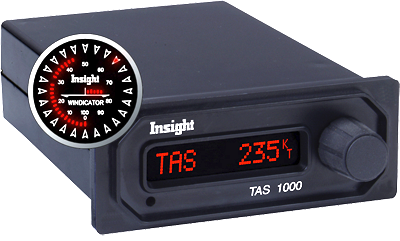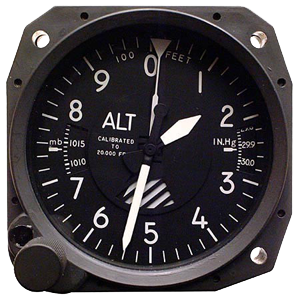 TAS-1000 &
TF-500 Answers
TAS-1000 &
TF-500 Answers
- NOTE: Installation of a TAS 1000 in a 28 Volt Aircraft.
TF500
After Garmin WASS update on most panel mount GPS's TF-500 stopped working
Garmin has to be set to twin and then right side in dealer mode on the GPS. FADC only and Z format
TF500 & FF
Intermittent power, or No RS 232 available
Must have a good ground from the transducer case to the airframe. A Service loop at the transducer tie wrapped back to the transducer case. Stops the 3 pin connector from having intermittent issues. The engine and the airframe, vibration is at different rates which causes stress on the connector.
TF500
No RS 232 available
Make sure the GPS is set to Shadin FADC (NOT Shadin fuel)
TAS1000
Interfacing TAS1000 and Sandel 3500
When interfacing the two components be sure to set the BTSTRP on the "FCS EMULATION" page to NORMAL.Ref page 7-12 of Sandel SN3500 Installation Manual
It is recommended to use Insight fuel flow sensors in a 28 volt aircraft.
If not, you will have to supply 12 volts to the existing sensor or sensors.

![]() Altimeter
with corected baro output -
Click Here
Altimeter
with corected baro output -
Click Here
Windicator Problems
Question: Windicator stops or is erratic.
Answer: If TAS 1000 shows no RS232 error .
First things to check are the TAT, SAT values on TAS 1000 in flight.
If they are way off , check installed OAT probe and OAT wiring harness on ground.
See - ![]() Test
OAT Probe -
Click Here
Test
OAT Probe -
Click Here
Accuracy and Resolution of the TAS 1000
Question: The values for the wind components that are displayed by your GPS receiver and the TAS 1000 do not exactly match.
Answer: Because of the various GPS receivers on the market, along with the equally various methods of passing information from each GPS receiver, the TAS 1000 and the GPS receiver communicate with each other at different speeds.
When the TAS 1000 calculates the winds, it uses the ground speed and track information that was received from the GPS receiver, OAT from installed probe and uses these values along with values from the heading and true air speed, to calculate the wind speed and direction.
However, because of variations in how each individual GPS receiver handles the information, the data being handed to the TAS 1000 may not match what is being displayed on the screen. As an example, some GPS receivers on the market utilize averaging for wind components. Since the GPS receiver is displaying the average wind, and the TAS has received the current, non-averaged value, there may be a difference between what you see on the TAS and GPS displays.
Question: The TAS 1000 course and my GPS course do not always agree when I am in a turn. Is there a problem with the unit?
Answer: Another factor that can appear to affect the accuracy of the TAS 1000 is the typical course drift of your average, everyday flight. The TAS 1000 and GPS communicate approximately every 1.5 seconds. During this time, an airplane in flight can experience a drift based heading change of as much as 3 degrees. When the GPS updates the wind information, it could therefore cause the TAS to be using information that is 3 degrees off from the original course.
This is the reason why the TAS 1000 will constantly monitor the heading and track change, and will try to correct the wind information as much as possible to eliminate the errors that this process can introduce.
Naturally, the faster your GPS receiver can communicate with the TAS, the better the accuracy of the resulting wind data will be.
Question: The air and wind information on my GPS receiver has more digits, is the TAS losing information?
Answer: In order to handle and manage the volumes of data and communication that have to take place between the TAS 1000 and the GPS receiver, the TAS employs simple rounding of the data. When we developed the TAS, we had to find the best balance between rapid information and accuracy. Based on the feedback from our customers, along with years of flying experience, we elected to provide more accurate information rather than largely unusable resolution.
The results of this effort can be seen in the TAS 1000. The accuracy is the unit is approximately 1.5%, with 2 knots as the maximum expected error in speed. While this may present some minor differences between the displayed data on the GPS and the TAS, the long-term operation of the unit as well as the pilot's ability to interpret and use the produced data are enhanced over all other configurations that we tested.
Windicator on Start and Taxi
Momentarily displays the
software version number.
Performs a self test with
all LEDs on.
A walking dot on the outer ring will
appear.
The photo cell on the TAS 1000 unit controls the display brightness on both the TAS 1000 and Windicator.
Windicator on Take-Off
The walking dot will remain on the Windicator display
until the aircraft is in flight.
Once the aircraft is
in flight and all five elements needed for processing
winds aloft can be processed by the TAS 1000 will the
Windicator graphically show wind data.
The five elements used for wind calculations are:
1) True Air Speed from TAS
1000
2) Aircraft heading
3) GPS track
4) GPS
ground speed
5) OAT probe
A Final Reminder!
The flight data produced by the TAS 1000 will be equal to the data that you input into the system. Changing fuel quantities while in flight, not entering the complete barometer reading, or taking shortcuts on the entry of critical data will all act to reduce the accuracy of the TAS 1000.
Taking the time to assure that your data is correctly entered will help you to get the best accuracy and highest quality data from of your TAS 1000.
